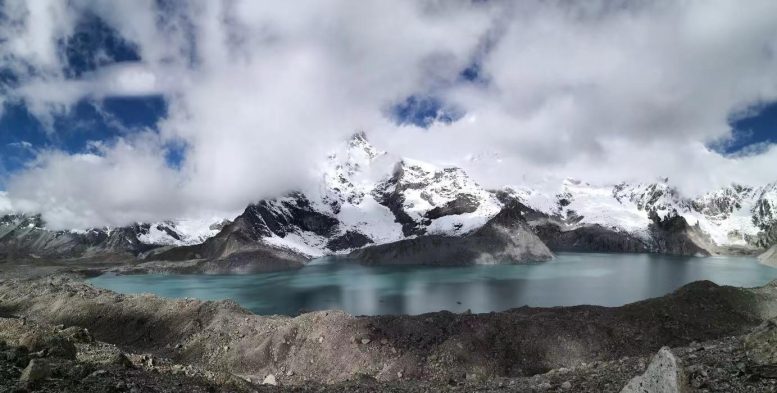
Galong Co. Credit: Huang Chen
Revealing “invisible” glacier loss underwater
Recent research shows that the mass loss of lake-terminating glaciers in the Himalayas has been severely underestimated, due to the limitation of satellites in detecting underwater changes in glaciers. This has significant repercussions for the region’s future projections of glacier disappearance and water resources
The study was published in the journal Nature Geoscience, and carried out by a global collaboration of scientists from the Chinese Academy of Sciences, Graz University of Technology in Austria, the University of St. Andrews in the UK, and Carnegie Mellon University in the United States.
The researchers found that a previous assessment underestimated the total mass loss of lake-terminating glaciers in the greater Himalayas by 6.5%. The most significant underestimation of 10% occurred in the central Himalayas, where glacial lake growth was the most rapid. A particularly interesting case is Galong Co in this region, with a high underestimation of 65%.
This oversight was largely due to the limitations of satellite imaging in detecting underwater changes, which has led to a knowledge gap in our understanding of the full extent of glacier loss. From 2000 to 2020, proglacial lakes in the region increased by 47% in number, 33% in area, and 42% in volume. This expansion resulted in an estimated glacier mass loss of around 2.7 Gt, equivalent to 570 million elephants, or over 1,000 times the total number of elephants in the world. This loss was not considered by previous studies since the utilized satellite data can only measure the lake water surface but not underwater ice that is replaced by water.
“These findings have important implications for understanding the impact of regional water resources and glacial lake outburst floods,” said lead author Zhang Guoqing from the Institute of Tibetan Plateau Research, CAS.
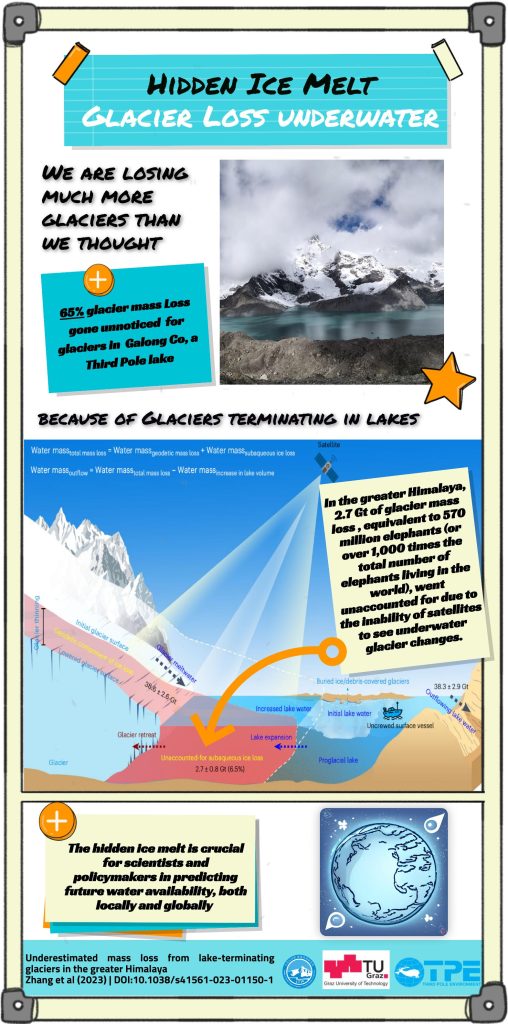
Revealing the ‘invisible’ glacier loss underwater. Credit: TPE
By accounting for the mass loss from lake-terminating glaciers, the researchers can more accurately assess the annual mass balance of these glaciers compared to land-terminating ones, thus further highlighting the accelerated glacier mass loss across the greater Himalayas.
The study also highlights the need to understand the mechanisms driving glacier mass loss and the underestimated mass loss of lake-terminating glaciers globally, which is estimated to be around 211.5 Gt, or roughly 12%, between 2000 and 2020.
“This emphasizes the importance of incorporating subaqueous mass loss from lake-terminating glaciers in future mass-change estimates and glacier evolution models, regardless of the study region,” said co-corresponding author Tobias Bolch from Graz University of Technology.
David Rounce, a co-author from Carnegie Mellon University, noted that in the long run, the mass loss from lake-terminating glaciers may continue to be a major contributor to total mass loss throughout the 21st century as glaciers with significant mass loss may disappear more rapidly compared to existing projections.
“By more accurately accounting for glacier mass loss, researchers can better predict future water resource availability in the sensitive mountain region,” said co-author Yao Tandong, who also co-chairs Third Pole Environment (TPE), an international science program for the interdisciplinary study of the relationships among water, ice, climate, and humankind in the region and beyond.
Reference: “Underestimated mass loss from lake-terminating glaciers in the greater Himalaya” by Guoqing Zhang, Tobias Bolch, Tandong Yao, David R. Rounce, Wenfeng Chen, Georg Veh, Owen King, Simon K. Allen, Mengmeng Wang and Weicai Wang, 3 April 2023, Nature Geoscience.
DOI: 10.1038/s41561-023-01150-1

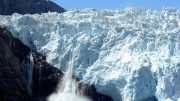
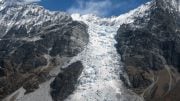
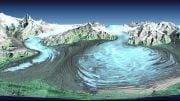

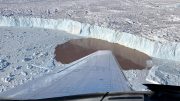



Why compare the ice loss to elephants?
Is it because the number makes it sound more dramatic?
They could make it even more dramatic if they compared it to mice.
Does this mean that the glaciers might be gone in 12 years after all?
https://www.theguardian.com/environment/2010/jan/20/ipcc-himalayan-glaciers-mistake
When dealing with Earth processes, it is a mistake to assume that whatever the current rates are, they will remain constant indefinitely.
If the climate were to turn colder, then the glaciers would stop melting and the meltwater, on which the local populations depend, would disappear just as surely as if the glaciers were to melt.
There is nothing to discuss, You guys are crazy.